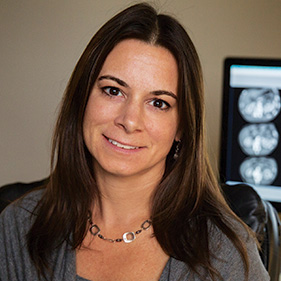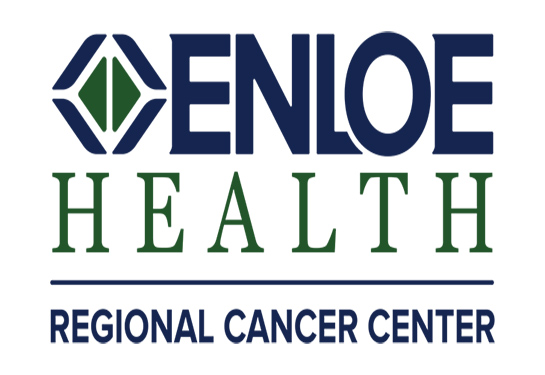New study spotlights radiation exposure from medical imaging for children with Down syndrome
Children with Down syndrome often undergo extensive medical tests, including imaging, that may use ionizing radiation. At the same time, genetic disorders like Down syndrome have an established increased risk of certain cancers, making exposure to radiation early in life less than ideal. Until recently, little research had been done to measure typical imaging radiation exposure rates for children with Down syndrome.
A recent study by UC Davis Health researchers quantifies those rates of exposure. The paper is based on the work of Emily C. Marlow, a former epidemiology doctoral student at UC Davis and current postdoctoral fellow at the American Cancer Society. The PLOS ONE journal article, “Medical Imaging Utilization and Associated Radiation Exposure in Children with Down Syndrome,” details her research team’s analysis of a decade’s worth of data from over 4 million children’s medical records at six U.S. health care systems. They found that children with Down syndrome experienced almost 10 times as many medical imaging examinations as other children, with implications for their lifetime cancer risks.
Diana Miglioretti, cancer center researcher and professor and division chief of biostatistics at the UC Davis School of Medicine is the study’s senior author. She said that this is the first study of its kind to utilize a large, comprehensive data set to measure radiation exposure from medical imaging in children with Down syndrome.
We are concerned that children with Down syndrome might be more sensitive to developing leukemia from radiation exposure.”—Diana Miglioretti, UC Davis Comprehensive Cancer Center researcher
Ionizing radiation and Down syndrome
Ionizing radiation is present in many types of medical scans, such as chest x-rays and nuclear medicine. People are also introduced to small amounts of background radiation through exposure to the sun, atmosphere, and other sources. MRIs and ultrasounds, other commonly used scans, don’t use radiation.
While ionizing radiation can help physicians identify disease within the body, repeated exposure to radiation from any source can increase one’s cancer risk. Cancer risk from radiation exposure in medical imaging is extremely small, so necessary medical scans shouldn’t be avoided.
The researchers saw cause for concern for children with Down syndrome, though, who may have increased susceptibility to radiation because they already have an increased risk of developing cancer. For example, Marlow’s research further established the strong relationship between leukemia risk and Down syndrome.
Because people with Down syndrome often have other conditions, such as congenital heart disease and musculoskeletal disorders, they may undergo a substantial amount of medical imaging at a young age. Additionally, medical imaging rates for all children in the U.S. have increased over time. Although imaging is helpful for diagnosing medical issues, the team wanted to understand the disparities in radiation exposure between children with and without Down syndrome.
“For children with Down syndrome, specifically, we're seeing an increase in CT imaging and angiography, both of which have a relatively high dose of radiation — many times more than standard radiographs,” Marlow explained.
Miglioretti’s interest is to minimize any harms of medical imaging and her biggest concern for children with Down syndrome is CT (computerized tomography) scans. Leukemia is one of the most sensitive cancers to radiation, with one of the shortest times to develop it. “We are concerned that children with Down syndrome might be more sensitive to developing leukemia from radiation exposure,” she said.
Considering options for Down syndrome patients
The retrospective cohort study used medical data from six U.S. health care systems between 1996 and 2016. It included 4,348,226 patients, of which 3,095 children were identified with Down syndrome.
The researchers analyzed the radiation dose absorbed into a child’s red bone marrow, which they estimated from patient data on medical scans, as the primary risk of radiation exposure due to its association with leukemia.
They found that children with Down syndrome were exposed to ionizing radiation at significantly higher rates than other children. On average, they received imaging at 9.5 times the rate of other children before reaching one year of age, and at 2.3 times the rate of other children between 1 – 18 years of age.
Though risks of developing cancer from medical imaging are small, the researchers suggest some caution. “There are always pros and cons to medical imaging,” Marlow said.
For example, using a CT scan for a noncommunicative child can be far easier than expecting them to lay still for an MRI. “Doctors and parents just need to take into account how frequently the child is being exposed,” she added.
“The message we want to convey is that medical imaging should be used judiciously,” said study co-senior author Rebecca Smith-Bindman, a professor of epidemiology and biostatistics and director of the Radiology Outcomes Research Laboratory at UC San Francisco. “Physicians and parents should work together to ensure that imaging is used only when there is clear need for additional information that imaging can provide, and that the potential benefit justifies the additional risk.”
UC Davis Comprehensive Cancer Center
UC Davis Comprehensive Cancer Center is the only National Cancer Institute-designated center serving the Central Valley and inland Northern California, a region of more than 6 million people. Its specialists provide compassionate, comprehensive care for more than 100,000 adults and children every year and access to more than 200 active clinical trials at any given time. Its innovative research program engages more than 240 scientists at UC Davis who work collaboratively to advance discovery of new tools to diagnose and treat cancer. Patients have access to leading-edge care, including immunotherapy and other targeted treatments. Its Office of Community Outreach and Engagement addresses disparities in cancer outcomes across diverse populations, and the cancer center provides comprehensive education and workforce development programs for the next generation of clinicians and scientists. For more information, visit cancer.ucdavis.edu.





